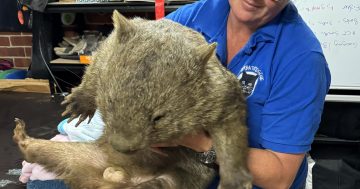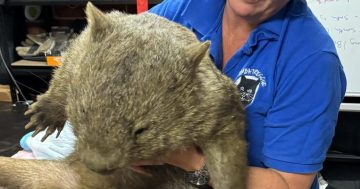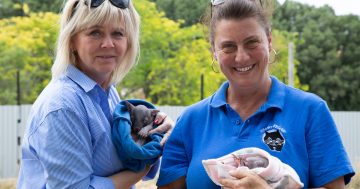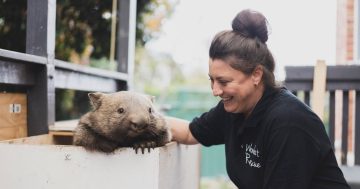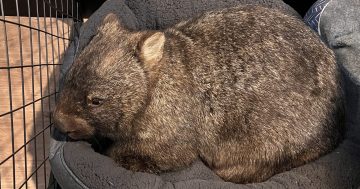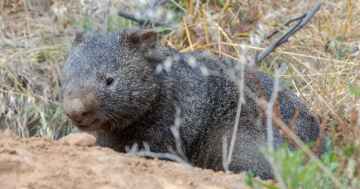
Founder of Wombat Rescue Yolandi Vermaak with one of her inquisitive friends. Photo: Wombat Rescue.
Point Hut Crossing, near Gordon in Tuggeranong, might be a popular swimming hole in summer, but it’s a killing field for wombats year round.
A tiny parasitic mite is to blame, which causes the skin disease mange.
The mite buries its way into the wombat’s skin where its faeces create intense itching and scabs that quickly become infected. Death for the wombat is almost always inevitable.
The mite can’t last long in sunlight or cold temperatures, but in a warm environment like a wombat burrow it can survive for up to three weeks without a host to feed on.
All it takes is for a wombat to sniff around an infected burrow during this window and there’s another mange victim.
Wombat Support and Rescue NSW/ACT – or simply, Wombat Rescue – has been trying to tackle the issue since 2018, rallying volunteers to treat the burrows along all ACT waterways.
“Wherever you have a river, you have mange,” founder of Wombat Rescue Yolandi Vermaak says.
“Wombats live around river areas mostly, and then with flooding, carcasses get washed downstream and it keeps spreading. It’s really, really contagious.”
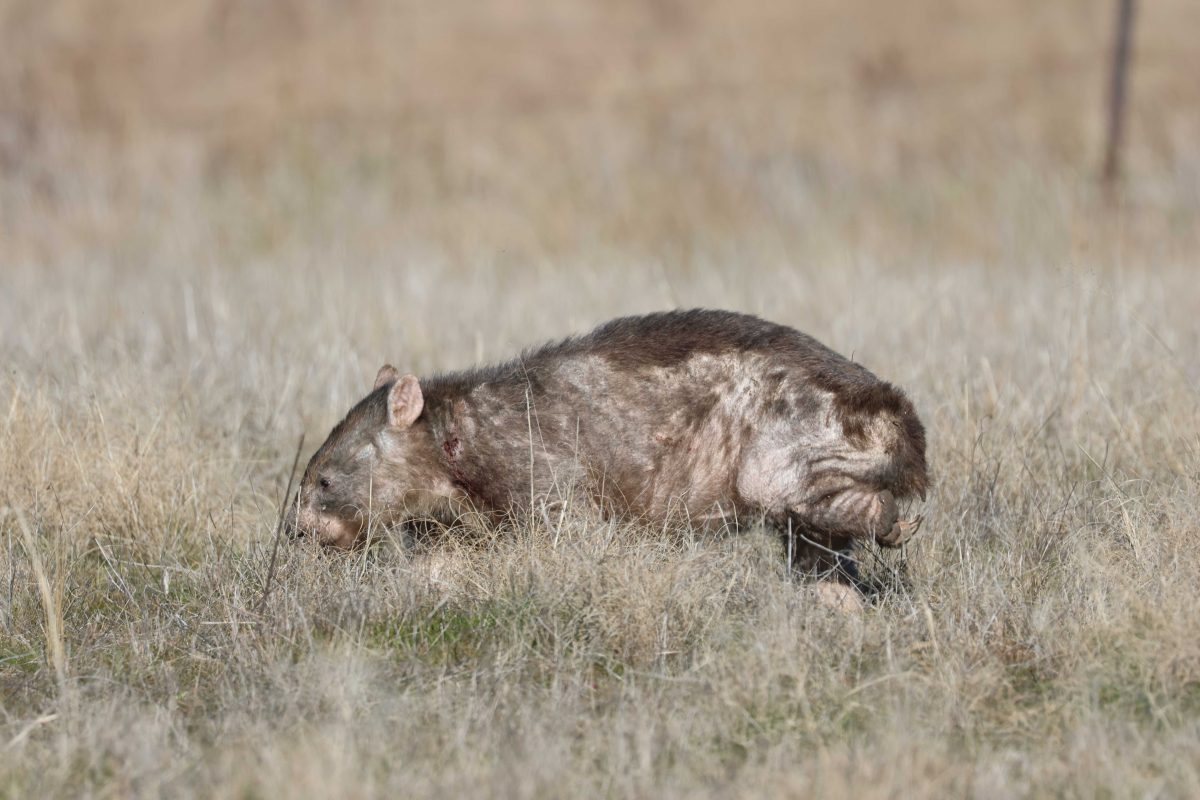
A wombat suffering with mange. Photo: Wombat Rescue.
But it’s a long and expensive process.
“Our teams go out and tag all the burrows with GPS locations to create a digital map of where they all are,” Yolandi says.
“And then we install flaps at the entrance to the burrows made of ice cream container lids in a steel frame. And on the lid, we mount jar lids full of medicine.”
When the wombat exits the burrow at dusk, the flap empties the jar lids of liquid Moxidectin onto the wombat’s fur so they effectively “self-medicate”.
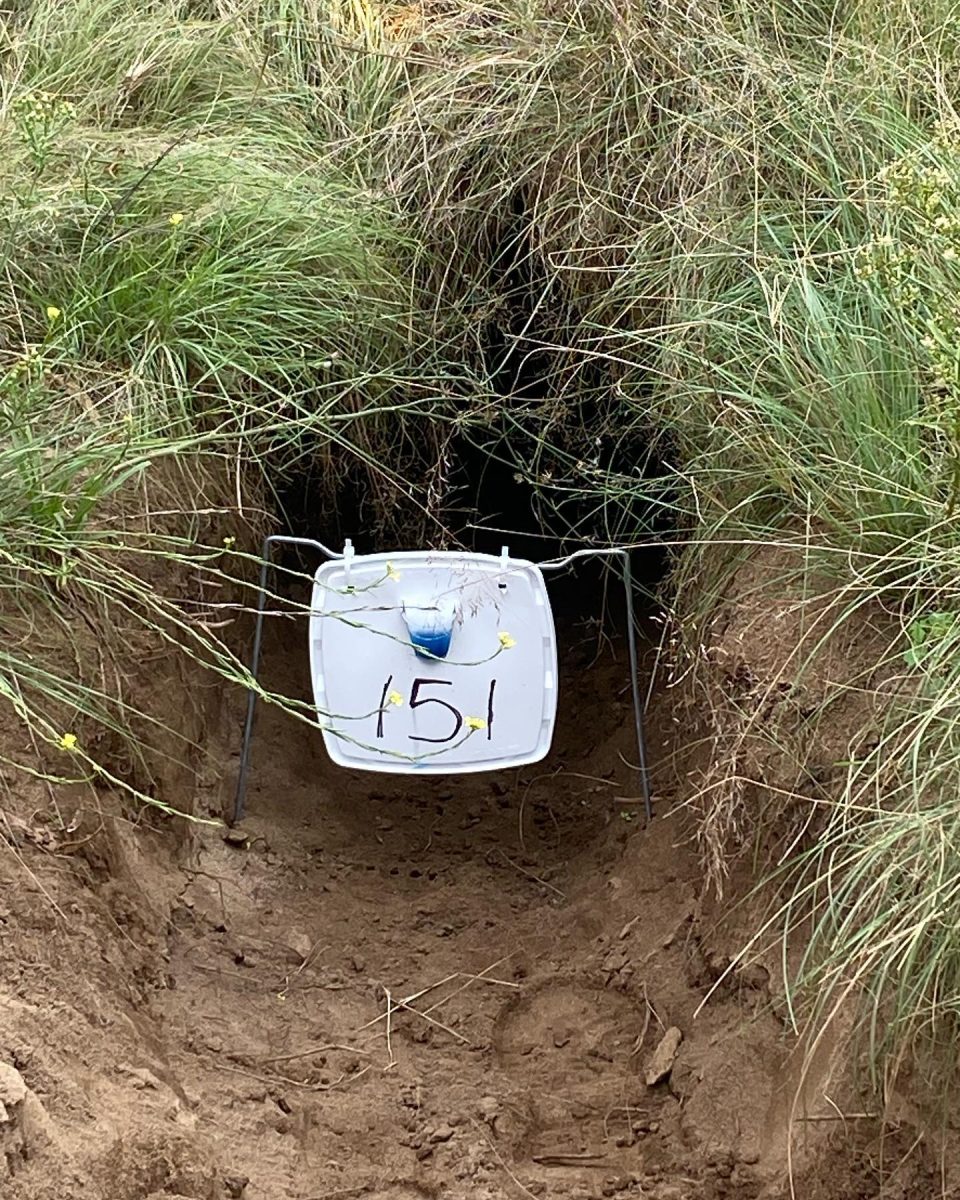
The medication flap at the entrance to a burrow. Photo: Wombat Rescue.
The volunteers return every week over four months, so each wombat receives 15 doses.
“We try to do population treatments where we cover the whole area, which is extremely time consuming.”
The treatment requires about $10,000 worth of medicine for every kilometre, at $1100 for a 15-litre drum. And while Peters ice cream agreed to donate the container lids, other costs include the steel frames for the burrow flaps, personal protective equipment (PPE) and cameras.
In early June, Wombat Rescue was awarded a $24,000 grant from the ACT Government as part of the annual ACT Environment Grants program.
Yolandi says this will help the team tackle the next biggest problem area, along the Murrumbidgee River from Point Hut Crossing to Red Rock Gorge near Kambah.
“It’s about six kilometres of untouched wilderness, and I would love to cover the whole area.”
She estimates the grant will cover the first two kilometres, beyond which the organisation will be back to relying on donations. But even before the grant winners were announced, work had already begun.
“We couldn’t wait,” Yolandi says.
“We’ve been in the field for a few weeks now and, usually we put motion cameras up to see wombats, but we saw in-person three wombats in the field just wandering around.”
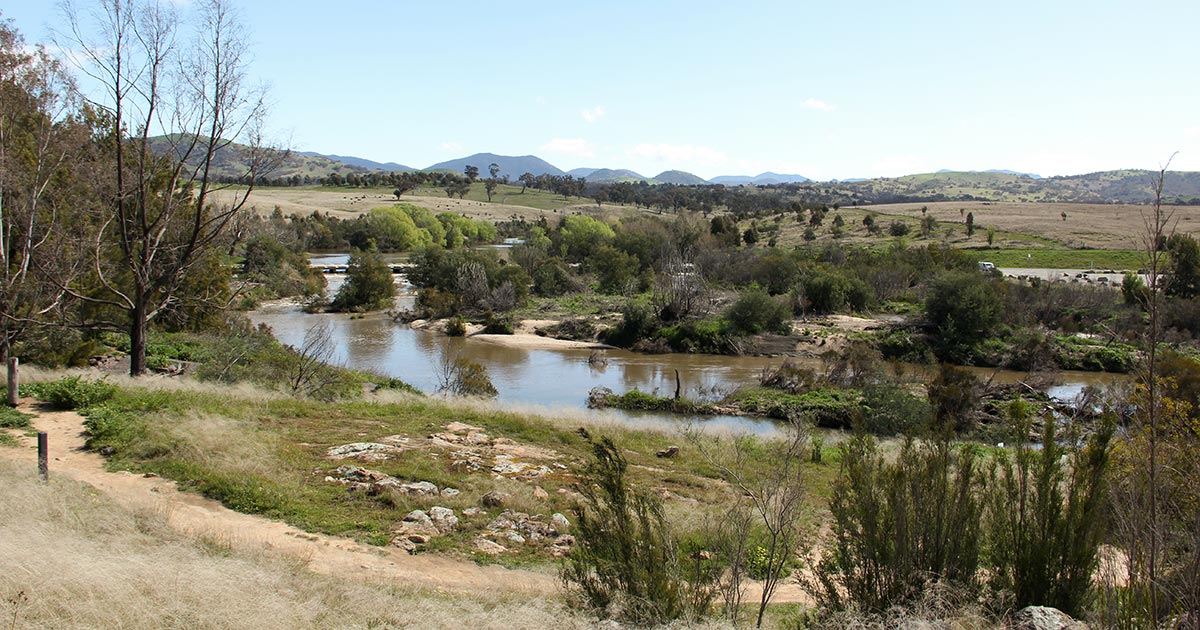
Point Hut Crossing is a mange hotspot. Photo: Parks ACT.
She says this points to a “huge” problem.
“When we started mapping, we found a burrow with a dead baby inside. Then we found its mum nearby, and she looked absolutely dreadful. I almost made the call to have her euthanased – she was really, really bad. But she’s in treatment now and looking so much better.”
There is no vaccine for mange, so the mite can return and reinfect a treated wombat. But Yolandi’s life mission is to bring its population to zero in the ACT.
“It’s a big work, but also very enjoyable – getting out at nine o’clock on a Sunday morning into the fresh air. It’s a great team and everyone’s chatting along. It’s a very positive experience.”
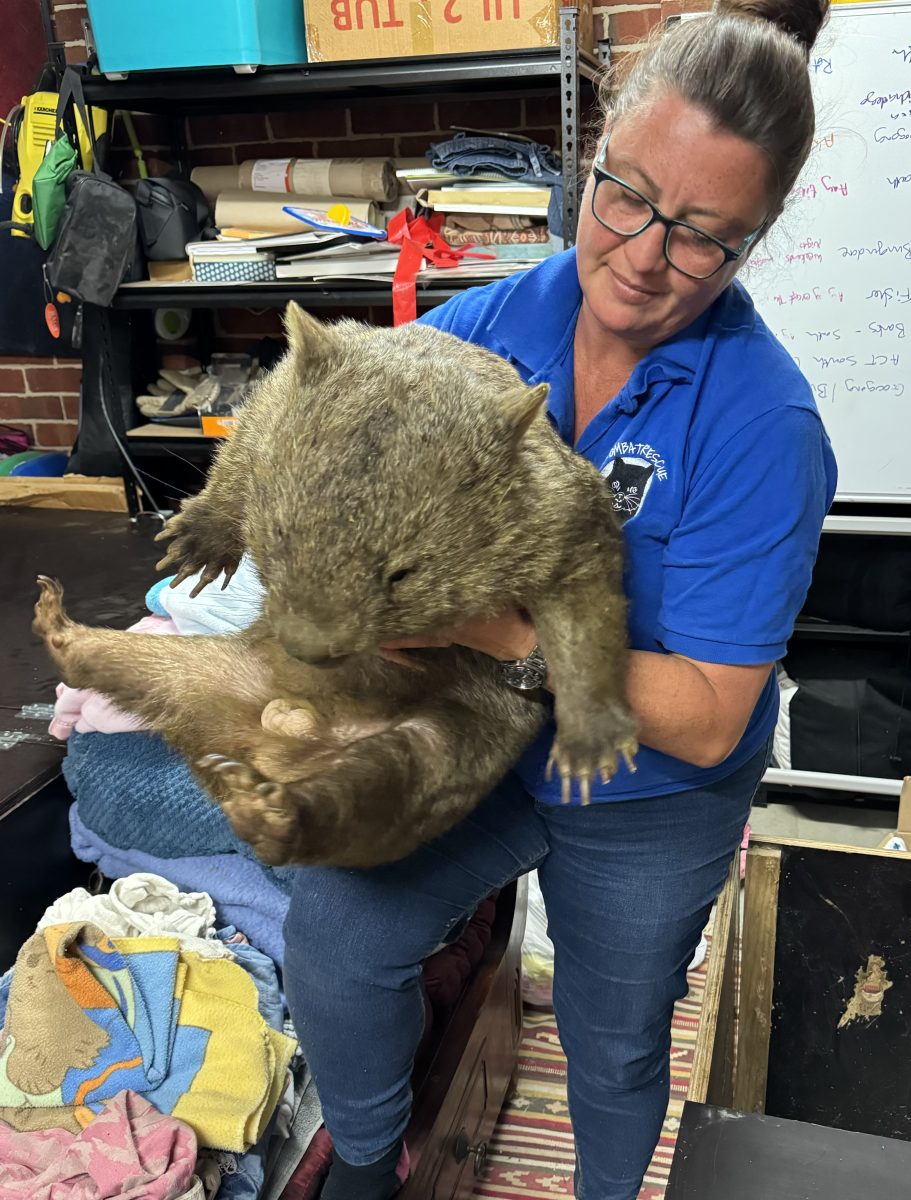
Only the worst mange cases are taken into care for three weeks of intense treatment. Photo: Wombat Rescue.
In addition to Wombat Rescue, the ACT Government awarded more than $350,000 to 22 community-led projects as part of the 2024 round of the ACT Environment Grants.
Landcare ACT received about $34,000 for Canberra Festival of Nature over two months in spring, around the same time as Floriade, based on last year’s success.
Project manager Maree Wright says it serves as an “umbrella event” for a range of volunteer groups and environmental organisations to run their own events. This year’s theme is grasslands.
“A lot of Canberra is built on grasslands, so much so that they’re a threatened ecosystem,” Maree says.
“It’s so easy to drive past a grassland nature reserve and just assume that it’s waiting for development to happen. But’s actually so important and we want to help people learn about that.”
Allocated every year since 1997, the ACT Environment Grants program “provides a fantastic opportunity for our community to tackle environmental issues that matter most to them”, according to Minister for the Environment, Parks and Land Management Rebecca Vassarotti.












